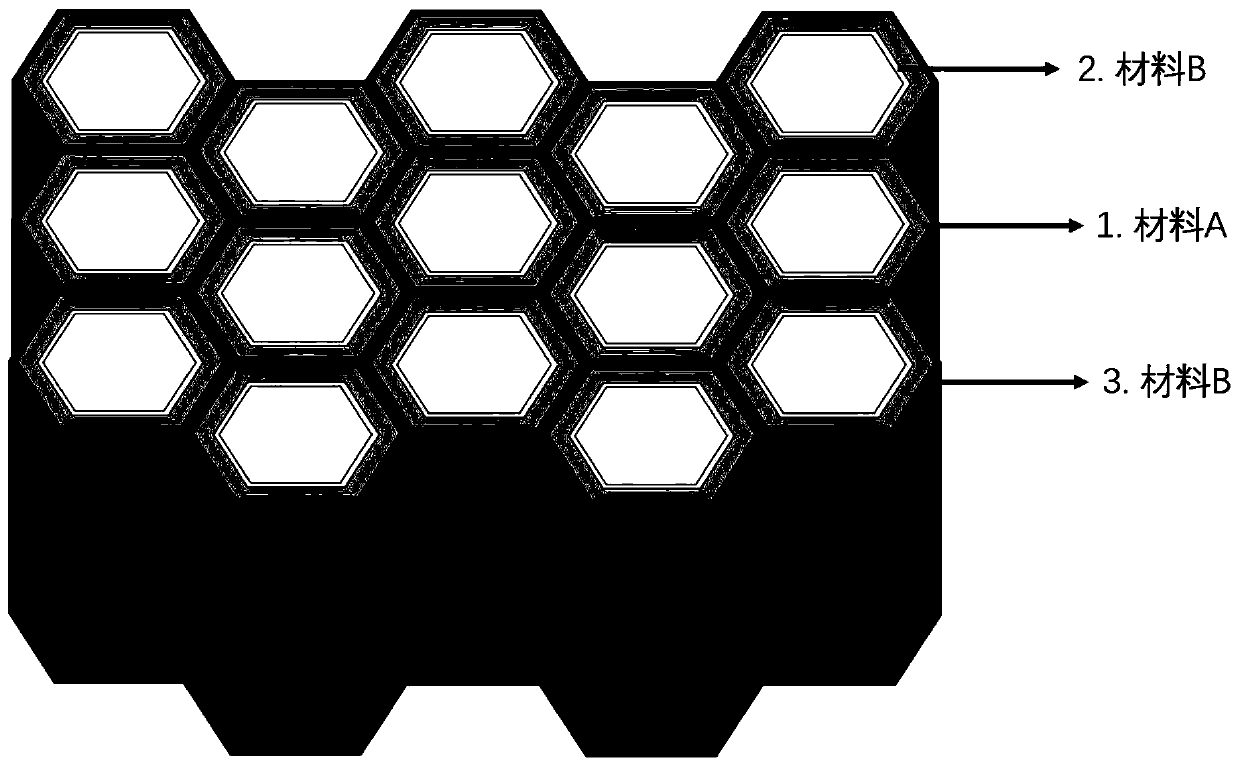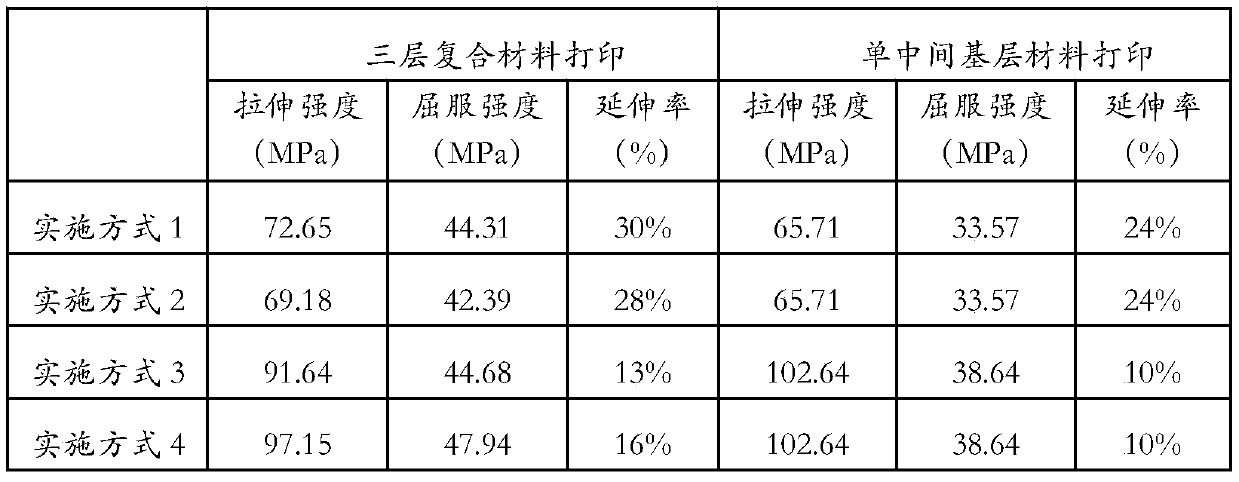Additive manufacturing method of functional composite honeycomb material
A technology of honeycomb materials and functional materials, which is applied in the field of additive manufacturing, can solve the problems that the additive manufacturing process needs to be explored urgently, and achieve the effect of less defects, tight integration, and optimized mechanical properties.
- Summary
- Abstract
- Description
- Claims
- Application Information
AI Technical Summary
Problems solved by technology
Method used
Image
Examples
Embodiment 1
[0031] Two alloy powders take Q235 and TC4 alloy (steel and titanium alloy) as examples. Among them, Q235 has excellent comprehensive mechanical properties, while TC4 alloy has excellent corrosion resistance and high temperature resistance. The composite honeycomb material composed of Q235 (base layer) and TC4 alloy (functional material layer) has excellent mechanical properties, corrosion resistance and high temperature resistance, and has great application value in the engineering field. According to the stress relief annealing process parameters of the substrate Q235 (Yuan Hongzhi, Feng Xiaoyu. Research on stress relief annealing process parameters[J]. Heat Treatment Technology and Equipment, 2014,35(2):48-50.), the printed honeycomb material The heating rate of 70~80℃ / h is heated to 550℃~650℃, the holding time is 3~5h, and the cooling rate of 60~80℃ / h is cooled to 300℃ with the furnace and then air cooled.
[0032] (1) Use metal 3D printing equipment and coaxial powder feedin...
Embodiment 2
[0037] Two alloy powders take Q235 and IN625 alloy (steel and high temperature alloy) as examples. Among them, Q235 has excellent comprehensive mechanical properties, and IN625 alloy has excellent high temperature resistance. The composite honeycomb material composed of Q235 (base layer) and IN625 alloy (functional material layer) has excellent mechanical properties and high temperature resistance, and has great application value in the engineering field. According to the stress relief annealing process parameters of the base material Q235, the printed honeycomb material is heated to 550°C to 650°C at a heating rate of 70 to 80°C / h, and the holding time is selected to be 3 to 5 hours, and cooling at 60 to 80°C / h The speed is cooled to 300℃ with the furnace and then air cooled.
[0038] (1) Using metal 3D printing equipment and coaxial powder feeding method, print the first layer: first print the base layer in the honeycomb structure with Q235 alloy powder, and the expected printi...
Embodiment 3
[0043] The two alloy powders take H65 and TC4 alloy (copper-zinc alloy and titanium alloy) as examples. Among them, H65 has excellent plasticity and welding properties, while TC4 alloy has excellent high temperature resistance and corrosion resistance. The composite honeycomb material composed of H65 (base layer) and TC4 alloy (functional material layer) has excellent molding processing, welding, high temperature resistance and corrosion resistance, and has great application value in the engineering field. According to the stress relief annealing process parameters of the substrate H65 (Zhou Shanyou. Heat treatment of copper alloy [J]. Shanghai Nonferrous Metals, 1985(2): 54-57.), heat the printed honeycomb material to 260~280℃, and keep it warm The time is 1h, and the water is cooled to room temperature.
[0044] (1) Using metal 3D printing equipment and coaxial powder feeding method, print the first layer: first print the base layer in the honeycomb structure with H65 alloy pow...
PUM
 Login to View More
Login to View More Abstract
Description
Claims
Application Information
 Login to View More
Login to View More - R&D
- Intellectual Property
- Life Sciences
- Materials
- Tech Scout
- Unparalleled Data Quality
- Higher Quality Content
- 60% Fewer Hallucinations
Browse by: Latest US Patents, China's latest patents, Technical Efficacy Thesaurus, Application Domain, Technology Topic, Popular Technical Reports.
© 2025 PatSnap. All rights reserved.Legal|Privacy policy|Modern Slavery Act Transparency Statement|Sitemap|About US| Contact US: help@patsnap.com


